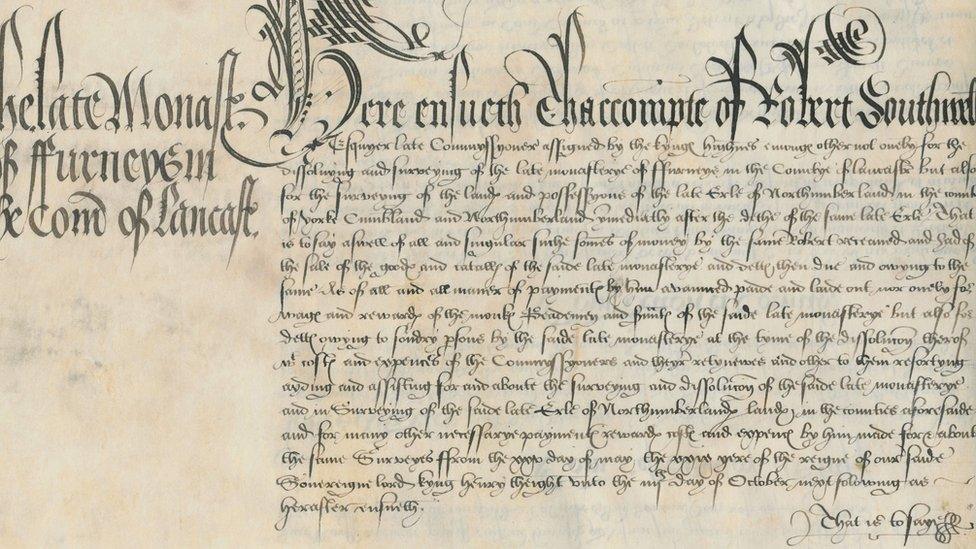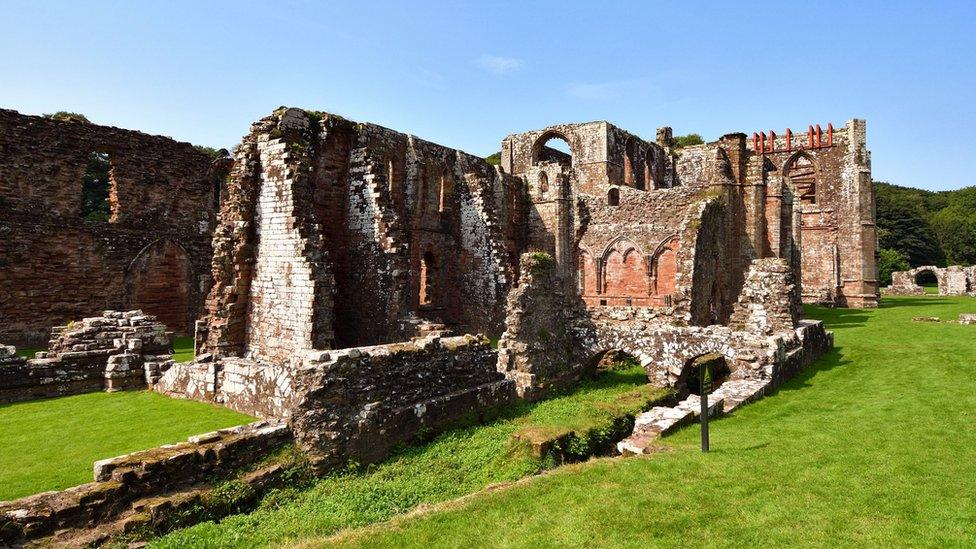Paper reveals vital Furness Abbey destruction details
- Published

The document was written in 1537 and found in the National Archives
A previously unseen, long-lost document has revealed "vital" detail about the destruction of the monasteries under Henry VIII.
Furness Abbey in Cumbria was the first of England's "greater" monasteries to be dissolved during the King's controversial religious reforms.
The page found in the National Archives was written by the man overseeing the abbey's dissolution in 1537.
Historian Dr Michael Carter said it was of "real historic importance".
The so-called "greater" monasteries were those with an annual turnover of more than £200 or that had 12 or more monks or nuns in residence.
The document was written by Robert Southwell, who was appointed commissioner for the dissolution of Furness Abbey, and while its existence was suspected for a long time, it has only recently been found by Dr Carter.
'Prove invaluable'
It was searched for, but not found, 200 years ago by Thomas Alcock Beck, the antiquary whose "research into the abbey remains an essential source for scholars to this day", English Heritage said.
Dr Carter said: "Packed full of information about the mechanics of the dissolution, the record is of real historic importance since the skills learned during the suppression of Furness Abbey, the largest and richest monastery in north-west England, were to prove invaluable at other monasteries.
"The dissolution gathered pace in the months following the end of Furness, and Richard Southwell went on to occupy key positions within Henry VIII's court."

Furness Abbey was the first of the "greater" monasteries to be dissolved
English Heritage said the document "imparts a nervousness about the area's lack of loyalty to Henry VIII", with the king's religious reforms "far from popular locally".
"Remarkably," a spokesman said, "the monks were allowed to remain at the abbey for several months before the work of destroying the buildings started, and were eventually given a generous cash handout to leave quietly."
Altar plate metal
The document shows many of the abbey's assets were sold locally, the "men of Kendal", for example, buying its bells for "the enormous sum of £80".
"A suspiciously small amount of precious-metal altar plate was seized from the monastery, raising the question of whether the monks had already disposed of some of it before the arrival of the royal commissioners," English Heritage said.
In total, almost £800 was grossed from the abbey's suppression, but only £367 remained after all the associated costs were dispersed.
As well as the monks' handout, this included paying off the monastery's debts, which came to £98, the stripping, smelting and casting of the lead (£70) and the commissioners' own expenses (£102).

Follow BBC North East & Cumbria on Twitter, external, Facebook, external and Instagram, external. Send your story ideas to northeastandcumbria@bbc.co.uk, external.